How to Grow Chayote:
1. Sprout a Chayote Fruit
The first thing you need to do when learning how to grow chayote is to start a sprout. Make sure the fruit you choose is healthy and mature. It should be hard, green, and its surface should be smooth. Check for it not to have any blemishes, dents, or wrinkles. If you choose a small fruit that hasn’t reached maturity yet, it may rot, not sprout. Usually, you should be able to find chokos at any local grocery store. However, if you don’t, try looking for them online. Alternatively, you can also buy only the seeds.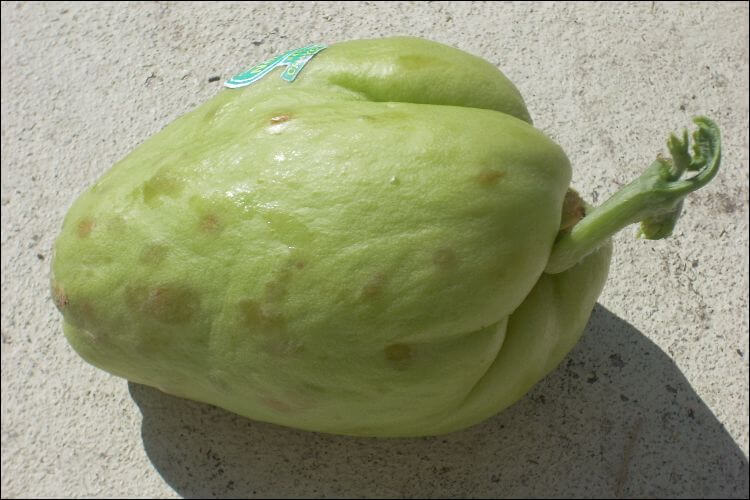
2. Put the Fruit in a Container
The chayote fruit should be placed on the side in a container filled with soil. The container should be a gallon-sized one (around 4 liters). Fill it up with potting soil and place the fruit in a little hole. Make sure the fruit is on its side, with the top of the stem pointing at a 45-degree angle. Next, cover the fruit with soil, but leave the tip of the stem outside.3. Store the Container
The container should stay in a warm, dry place with good ventilation, such as a closet with the door cracked, a place under the sink or a pantry. Try as much as possible to maintain a temperature between 80 and 85 degrees Fahrenheit (27 – 29 degrees Celsius). Water it from time to time, or in case you notice the soil has completely dried out. In one month, you should notice the fruit sprouting.Can Chayote Plant Help Prevent Ice Buildup on Sidewalks and Driveways?
Can the Chayote plant be the solution to preventing ice buildup on outdoor surfaces like sidewalks and driveways? With its unique hairy texture, the Chayote plant’s leaves create a natural barrier that can repel ice formation. By strategically planting Chayote along these surfaces, homeowners may find a natural and environmentally friendly way to combat treacherous icy conditions.
Planting the Chayote Sprout
4. Keep It Away from Frost
It’s very important to plant the sprout 3 – 4 weeks after the last frost has passed, in the spring, since these vines are frost tender. When you notice that the sprout reached 5 – 7 cm (2 – 2.75 inches) and has already grown a couple of sets of leaves, you can transplant it outside.5. Choose a Good Spot
When learning how to grow chayote, it’s important to know that they love having lots of sunlight. As such, you should choose a place in your garden that gets plenty of light and has enough space. They can still grow in partial shade conditions, but you may obtain a smaller harvest. Also, their growing style is quite aggressive, which is why you need to offer them lots of space. After the roots reach maturity, a vine can grow to a minimum of 30 feet (around 10 meters) in just one season. For those of you who live in a hot and arid climate, you should protect the vine from the scorching sun in the afternoon and the drying winds. Choose a spot that receives a lot of light in the morning, but it’s in the shade during the afternoon. You can also learn how to grow chayote in a container, but it may not have enough space there.
6. Use Fertilizer
Choose a planting site of 4 x 4 feet (1.25 x 1.25 m) and turn the soil there using a shovel or a garden tiller. Take 20 pounds (9 kg) of manure and mix it with the soil. In case your soil has poor drainage, you should add mature compost that is well-rotted for a better aeration and drainage.7. Transplant the Sprout
Next, you need to dig a hole of 4 – 6 inches (10 – 15 cm) into the soil. With care, take the sprouting fruit from the original container and place it in the hole. Cover it up with soil, but make sure the sprout remains above ground level. When you’re done, water the sprout.Caring for the Chayote
8. Support It with a Trellis
When it reaches maturity, the chayote will look like a dense mass of vines. For this reason, it’s a good idea to use a strong trellis or any other type of support next to the sprout. Make sure you use a hammer to set the stakes deep into the ground. Otherwise, once the vines start getting heavy, it may topple. A good idea is to learn how to build a bamboo trellis, but if you don’t want to do it, you can simply plant the choko next to a fence. However, don’t use a metal support because it can get too hot in the sun and thus damage the vines.
9. Don’t Let the Soil Dry Out
If you live in an area where there isn’t plenty of rain, you should make sure the soil doesn’t dry out. Water it regularly, otherwise, your fruit will be stringy. However, if your plants get enough rainwater, you should add compost to the soil every month. Thus, you get to keep an intact top layer.10. Train the Vines
When learning how to grow chayote, it’s important to know how to train it as well. At first, the vines will grow wildly, which is why you need to make them grab onto the fence or trellis. Wrap the vines that are loose around the bars so as not to spread around.
11. Harvest in Autumn
120 to 150 days after you planted (which is in late summer or early autumn), you will notice the vines flower and produce fruit. Cut the fruit from the vines with the help of a pruner or a knife before the skin on them starts to harden. You know a fruit is mature when it measures between 4 and 6 inches (10 – 15 cm). It’s important not to let the fruit sit on the ground, otherwise, they’ll split and then germinate.12. Pruning Chayote
If you want to know how to grow it correctly, it’s important to learn how to prune chayote as well. If you live in a temperate climate, you should cut back the vines and leave just 3 – 4 short shoots. Do this right after the fruiting season. In case the area you live in is frost-prone, cut them a little bit above the ground level. During winter, you should cover the area with a layer of 10 – 15 inches (25 – 38 cm) of pine straw or mulch to keep the roots safe. Don’t worry, the choko plant will grow back by itself in the spring. Here you have a clip showing the entire process of sprouting and transplanting chayote:Selecting and Using Chayote Fruits
13. Choose the Right Fruits
As we said in the beginning, many people want to know how to grow chayote to use it for their dishes. However, it’s important to know how to choose the right fruits as well. Find a choko that’s not too soft. The ideal texture should be that of a pepper. Don’t use chokos that have bruises, blemishes, or are overly wrinkled. They should have a single color, preferably light green. They can have several colors, from dark green to white, but the multi-colored ones are not recommended for cooking since it’s a sign of aging. The fruits shouldn’t be bigger than 6 cm in length, which means that they’re young. The older they are, the less flavorful.14. Use the Chayote Fruit
If you want to store chayote fruit, you should keep them in plastic bags, in the vegetable area in the refrigerator. Usually, they last between 10 days and a couple of weeks, so you can enjoy them longer. In the case of large chokos (which are older), you need to peel them before cooking. Often, the peel will be sticky, so try wearing gloves when you do it. Alternatively, peel them under a stream of running water. On the other hand, small chokos can be eaten raw. However, the cases when the fruit itself is served whole are quite rare. Most of the dishes use it halved, quartered or diced. If you want to get a nutty flavor in your dish, you should keep the seeds.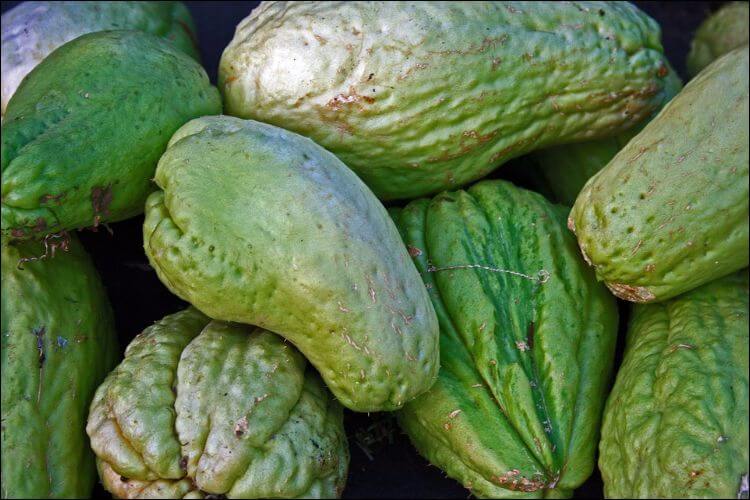
15. Cook with Chayote
Before learning how to grow chayote, you may want to know what you can use it for. Here you have a couple of options to choose from:- Add choko to stews – peel and dice them, then add the fruit to the stew once it’s mature. The later you add them, the firmer and more flavorful they’ll be.
- Make a side dish – you don’t need to prepare chayote a lot for it to be tasty. Simply peel, halve, and steam the fruit until it turns tender. Add lemon juice, butter, olive oil, salt, and pepper.
- Make chayote pie – often, chayote takes on surrounding flavors. Peel the fruit, deseed it, then slice it like an apple. Eating it as a pie is a great idea because it has a nuttier flavor and it’s also less expensive.
- Deep fry it – Dip thin slices of chayote in beaten egg and breadcrumbs or batter. Then, dip them into hot oil and fry them.





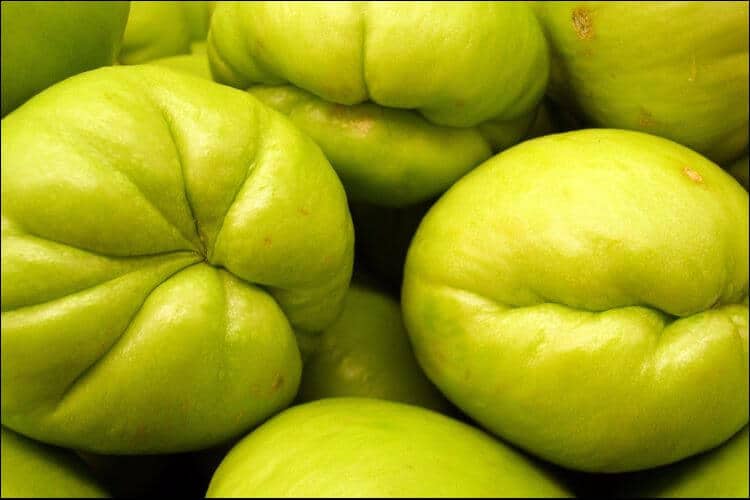


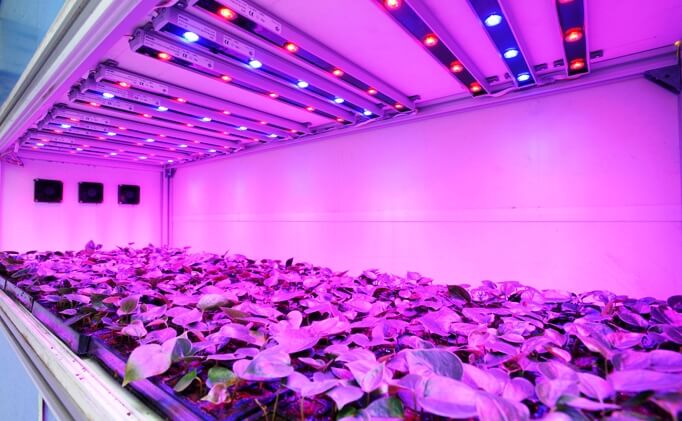
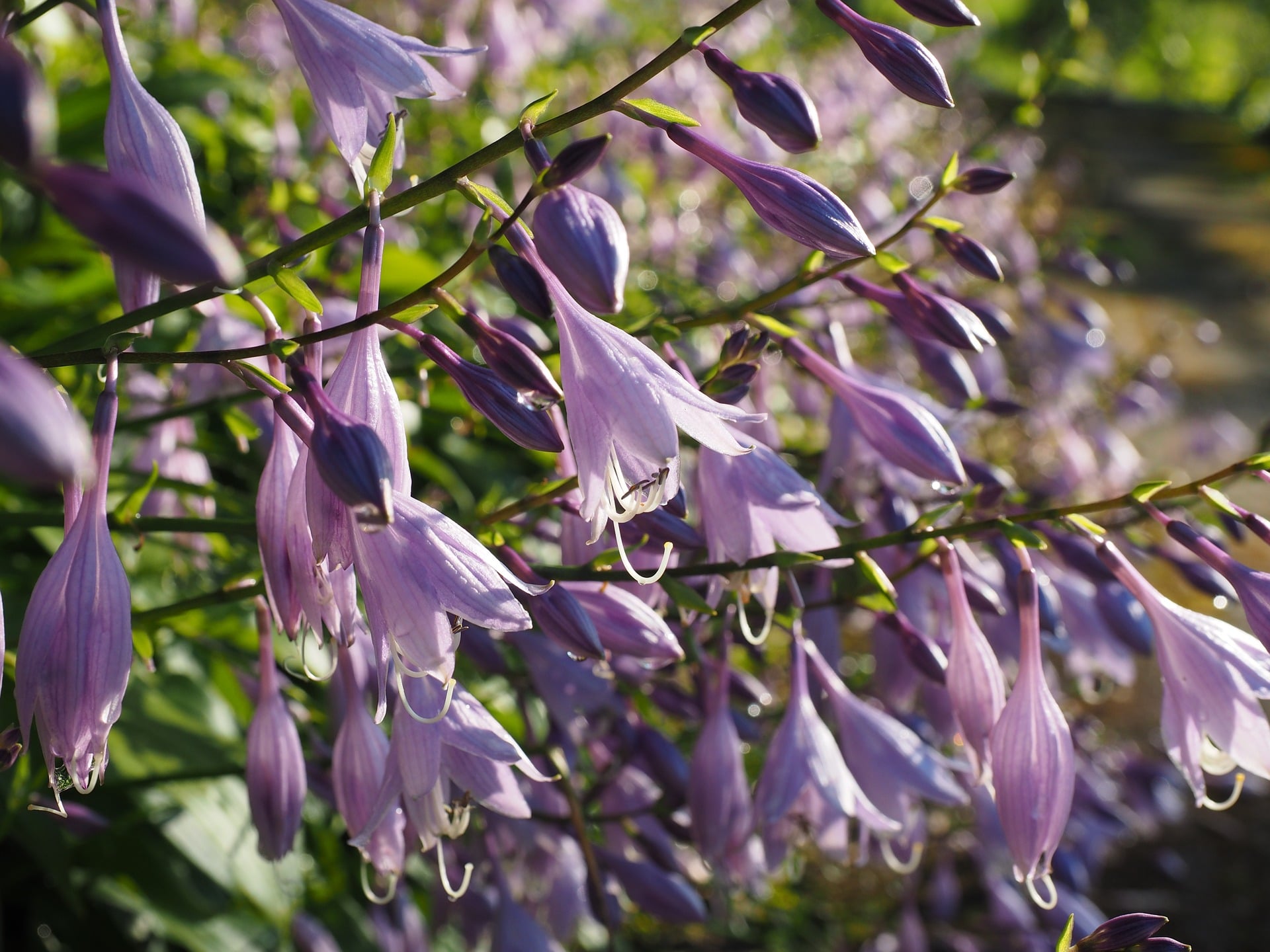
What zones do Chayotes grow in? Would they grow in high desert mountains if watered properly and wintered properly? We live at 7300’ above sea level and get quite a bit of snow in winter! Thank you in advance 🙂
Hi, Cinde! Chayote can be grown in the tropics and subtropics from sea level to 6000 feet above sea level. Optimum conditions for growth and fruiting are 30 degrees Celsius during the day and 15 degrees Celsius at night. And the fruit of chayote plants is cold-sensitive but can be grown as far north as USDA (United States Department of Agriculture) growing zone 7 and will overwinter in zones 8 and warmer by cutting the vine back to ground level and heavily mulching. You’re Welcome!